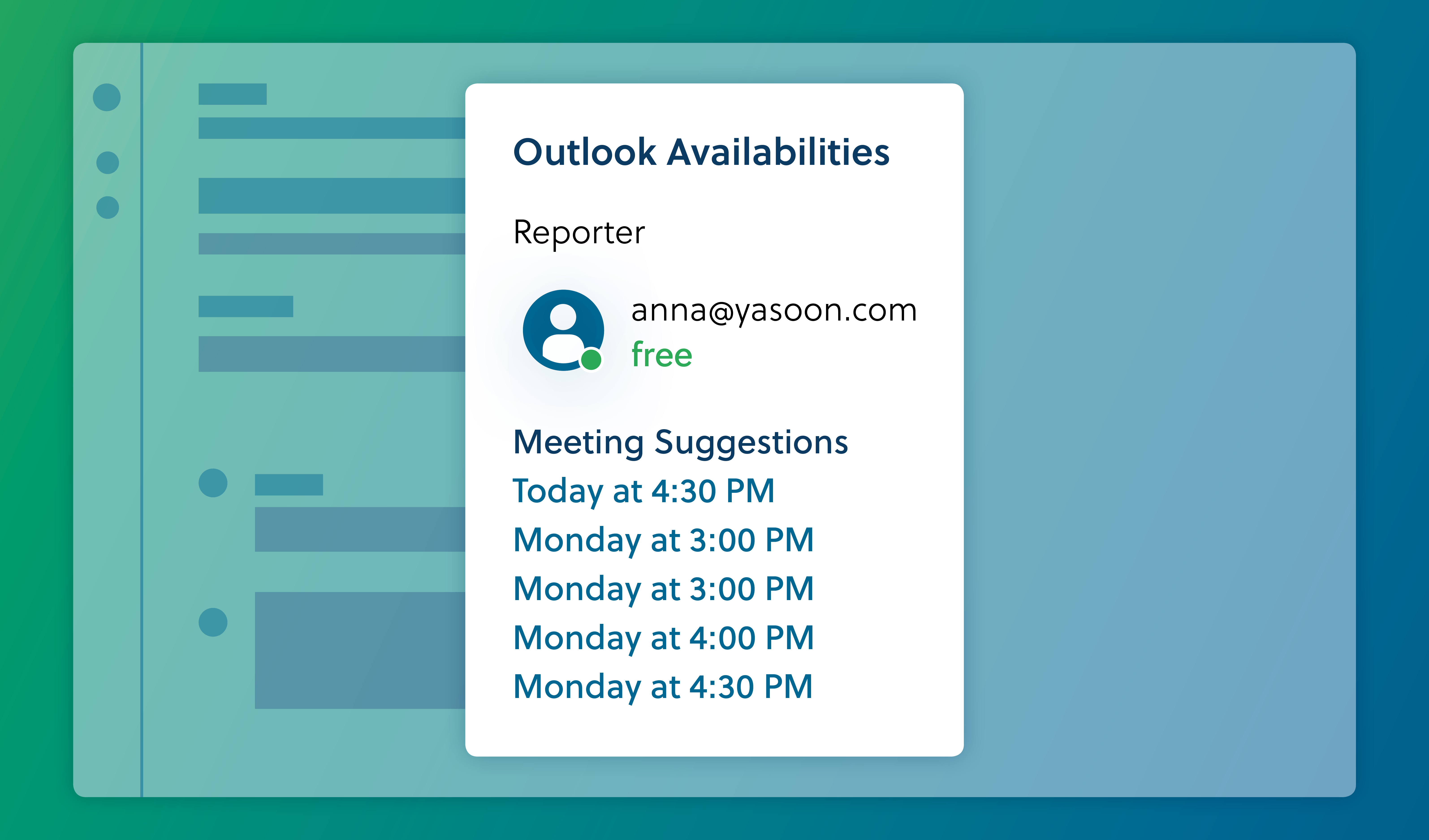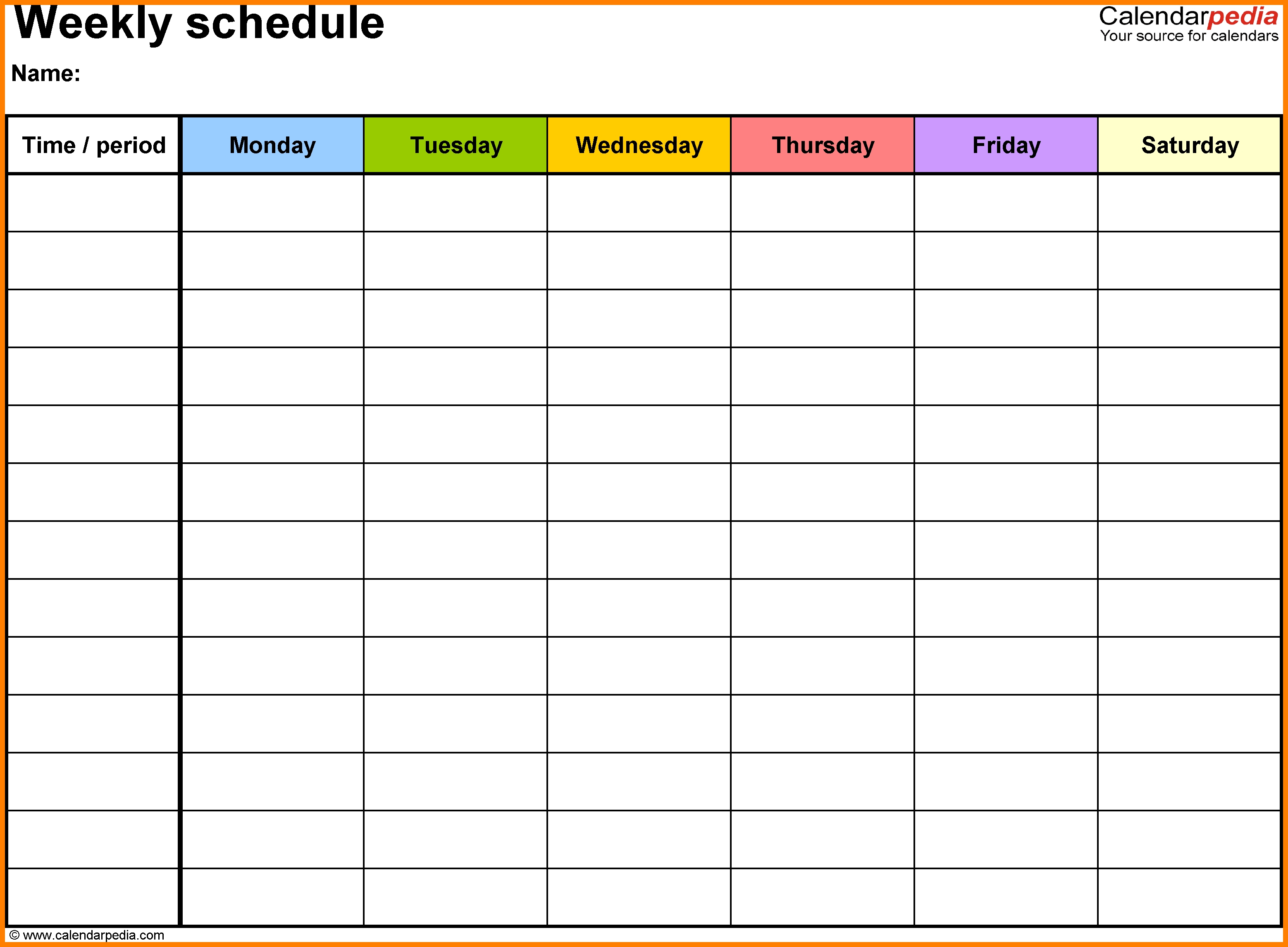I need to arrange approx. 50 meetings with 50 users. Rather than contacting them all individually, I had an idea to send a blanket email to all of them with a list/calendar of available slots, and then allow them to pick their preferred slot electronically. Organize your appointments and events with this accessible blank planning calendar template, featuring a monthly and weekly views and week day schedules broken down into hourly time slots. Casio 2100w price chart.
-->In a workplace or school, looking for a common time and place to meet often incurs overhead. Microsoft Graph applications can usefindMeetingTimes to identify any possible meeting times that satisfy time, location, and other constraints.
The findMeetingTimes action lets you specify conditions such as the meeting date/time range, duration, optional or required attendees, andnature of the activity (activityDomain). The action takes into account the attendees' and organizer's normal work schedules and free/busy status, and suggeststimes that are appropriate for the participants and type of activity. For instance, suggestions for a work-related activity always occurduring the work hours of the organizer and attendees, and suggestions where required attendees are available are ordered higher up in the suggested list.
In Microsoft 365, work hours and time zones are configurable per mailbox. The findMeetingTimes action handles time zone variations among the organizerand attendees. By default, findMeetingTimes returns suggestions in UTC. You can use the following request header to have findMeetingTimes return suggestionsexpressed in a specific time zone.

Especially useful for larger meetings, you can specify a percentage (minimumAttendeePercentage) for a quorum and have findMeetingTimes return suggestionsonly if that minimum attendee availability is met.
If findMeetingTimes cannot suggest any meeting times, it indicates a specific reason (emptySuggestionsReason), such as the organizer or a required attendee not available.Based on this value, you can better adjust the parameters and call findMeetingTimes again.
Note The findMeetingTimes action is currently available to Microsoft 365 work or school mailboxes, but not personal, outlook.com mailboxes.
Example
The following example shows how to use findMeetingTimes to return possible times for 2 users to meet for a couple of hours, taking intoaccount the users' free/busy and work schedules, and the attendee being away for part of the time. Because there are only 2 users for this meeting, suggestionsrequire 100% attendance. The following shows the users' free/busy schedule.
Organizer's calendar
Attendee's calendar
The example makes 2 calls to findMeetingTimes:
- The first call looks in the date range of April 18-20.As the attendee is out-of-office on April 18-19, and there is no commonly available time on April 20, the first call returns no suggestionswith the reason (emptySuggestionsReason) that attendees are not available.
- The second call looks for availability on April 21 and returns a suggestion of 2-4pm.
The two calls to findMeetingTimes include the following parameters. All parameters for findMeetingTimes are optional.
- attendees: one attendee, Samantha Booth, set as
requiredfor the type property - locationConstraint: does not require any location suggestion
- timeConstraint: the first call looks in the date/time range of April 18, 9am to April 20, 5pm; after the first call fails to suggest any times, the second call looks at April 21, 9am to 5pm
- meetingDuration: two hours
- returnSuggestionReasons: this example requires a reason for each suggestion
- minimumAttendeePercentage: 100%, as the attendee must be able to attend for any suggested time
First request
Look for a 2-hour free time slot for both users over April 18-20.
First response
There is no 2-hour time slot during the work hours of April 18-20 when both users are available.
Second request

Look for a 2-hour time slot on April 21.
Second response
The second findMeetingTimes request suggests April 21, 2-4pm for both users to meet.
Next steps
There are times when not all attendees can attend a meeting. You can have findMeetingTimes suggest a time if the confidence for attendance reaches a certain percentage,by specifying the minimumAttendeePercentage optional parameter. Learn more about theconfidence of a meeting suggestionand other parameters, and apply them as appropriate for meetings of larger sizes.

Especially useful for larger meetings, you can specify a percentage (minimumAttendeePercentage) for a quorum and have findMeetingTimes return suggestionsonly if that minimum attendee availability is met.
If findMeetingTimes cannot suggest any meeting times, it indicates a specific reason (emptySuggestionsReason), such as the organizer or a required attendee not available.Based on this value, you can better adjust the parameters and call findMeetingTimes again.
Note The findMeetingTimes action is currently available to Microsoft 365 work or school mailboxes, but not personal, outlook.com mailboxes.
Example
The following example shows how to use findMeetingTimes to return possible times for 2 users to meet for a couple of hours, taking intoaccount the users' free/busy and work schedules, and the attendee being away for part of the time. Because there are only 2 users for this meeting, suggestionsrequire 100% attendance. The following shows the users' free/busy schedule.
Organizer's calendar
Attendee's calendar
The example makes 2 calls to findMeetingTimes:
- The first call looks in the date range of April 18-20.As the attendee is out-of-office on April 18-19, and there is no commonly available time on April 20, the first call returns no suggestionswith the reason (emptySuggestionsReason) that attendees are not available.
- The second call looks for availability on April 21 and returns a suggestion of 2-4pm.
The two calls to findMeetingTimes include the following parameters. All parameters for findMeetingTimes are optional.
- attendees: one attendee, Samantha Booth, set as
requiredfor the type property - locationConstraint: does not require any location suggestion
- timeConstraint: the first call looks in the date/time range of April 18, 9am to April 20, 5pm; after the first call fails to suggest any times, the second call looks at April 21, 9am to 5pm
- meetingDuration: two hours
- returnSuggestionReasons: this example requires a reason for each suggestion
- minimumAttendeePercentage: 100%, as the attendee must be able to attend for any suggested time
First request
Look for a 2-hour free time slot for both users over April 18-20.
First response
There is no 2-hour time slot during the work hours of April 18-20 when both users are available.
Second request
Look for a 2-hour time slot on April 21.
Second response
The second findMeetingTimes request suggests April 21, 2-4pm for both users to meet.
Next steps
There are times when not all attendees can attend a meeting. You can have findMeetingTimes suggest a time if the confidence for attendance reaches a certain percentage,by specifying the minimumAttendeePercentage optional parameter. Learn more about theconfidence of a meeting suggestionand other parameters, and apply them as appropriate for meetings of larger sizes.
After getting meeting time suggestions, you may want to:
- Create an event and send it as a meeting request.
- Add an attachment to the event.
Find out more about integrating with Outlook calendar.
-->The MyAnalytics Focus page shows weekly averages for the time you have available to focus and time spent collaborating with others in your network.
Productivity insights
These insights are based on your recent activity in Office 365. Select View Suggestions to get ideas about how you might change or improve your current work patterns, such as booking focus time in your calendar and muting notifications when trying to concentrate.
About the metrics
Collaboration is based on time spent in meetings, emails, chats, and calls with Teams and Skype for Business. To learn more about how these metrics are calculated, see Collaboration.
Available to focus is equal to your working hours minus your collaboration hours; it shows the amount of time you have left over each week for individual work. Time that you block out on your calendar with no other attendees is counted toward the Available to focus metric, not toward the Collaboration metric. Additionally, any day that you mark as 'Out of office' on your calendar is excluded from this calculation.
These metrics are calculated only for your working hours, as determined by your Outlook calendar.
For example: If your working hours are set as 9 am to 5 pm daily (8 working hours per day) and you spent 30 hours in meetings, emails, chats, and calls in a given week, your dashboard will show 75% collaboration and 25% time available to focus for that week.
Focus plan
The focus plan in MyAnalytics helps you set aside regular focus time for your top-priority work. When you enroll in this plan MyAnalytics automatically schedules up to two hours of focus time for you every day. During the booked focus time, it silences chats in Teams and in Skype for Business. For more information, see MyAnalytics focus plan.
Focus tips
Block focus time on your calendar:
- It can be hard to go deep on challenging work if you only have small chunks of time to focus in between meetings or are easily distracted by incoming emails and chats. Blocking a few hours every day to focus without interruptions can help improve your concentration and effectiveness.
- Prioritize any focus time you book and do your best to avoid accepting meetings that overlap with it. In the same way, be respectful of double-booking your team's blocked time.
Manage notifications and interruptions: Multitasking can slow you down; after checking even just one email or chat, it can take a significant amount of time to refocus. To improve concentration, try turning off notifications and checking your email inbox less frequently.
Group your meetings together on your calendar: If your calendar is fragmented with meetings, try grouping meetings on your calendar so you have longer free blocks available to focus.
Evaluate and shorten your meetings: Meetings are essential for many jobs, but they sometimes last longer than needed. An easy starting point for reducing your meeting load is to review your recurring meetings and make sure they're a good use of time each week. Also consider dividing up meetings with coworkers and sharing notes afterwards if you're not all needed in the room at the same time.
